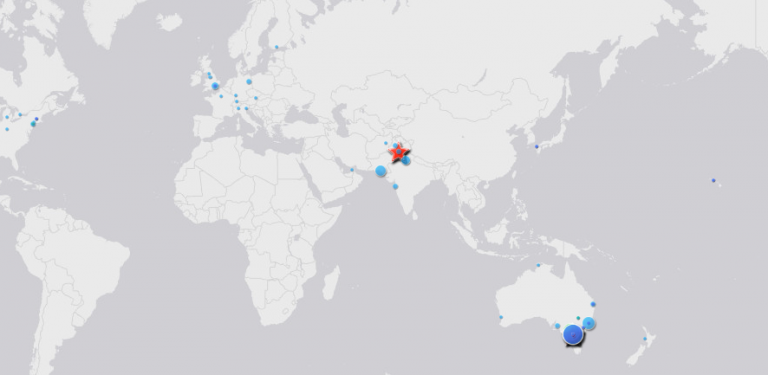Visit Nusra Latif Qureshi: A Case Study in the Globality of Contemporary Art by Nicole Bearden AC ’19
About This Project
Why is it important to see artists as a global presence? Historically, artists have been categorized by their place of birth by the institutions which showcase their work. While certainly understandable, as most labels are object-oriented, and this allows a consistent form of classification, this limited view of their experience leaves out so much of the journeys both they and their work have made, which in turn limits our understanding of their work.
By assembling an overview in the form of a map, viewers can locate geographic trends and styles, and even the crossing of paths with other artists– all of which have influence on the work of the artists we love.
For this project, I looked to Nusra Latif Qureshi, whose work is part of the collection in Smith College Museum of Art. Qureshi was born in Pakistan, and later relocated permanently to Australia. Throughout her career, she has exhibited, participated in residencies, and her work is held in collections all over the world. As such, Qureshi is a perfect candidate to explore the global ubiquity of the careers of contemporary artists and the lives of their art.
For this project, I wanted to avoid overly-interpreted material. This is not intended to replace an object label, or even an artist bio. Instead, the intention is to create a visual user-guided experience in which an overview of information is initially presented, and may then be navigated to visit catalogues of past exhibitions, photographs of works, videos of interviews, or even just websites of past residency locations with information gleaned from Qureshi’s own website and search results, which also include information from other artists who have noted their interactions with Qureshi.
The purpose here is to connect Qureshi to the art world at large, and by seeing the her path, be able to trace the connections to other artists, curators, galleries, and museums. This view allows for somewhat open interpretation, and the option to explore Qureshi, her work, or other artists and institutions at a level of engagement consistent with individual desires. The variety of the material included is meant to entice different interests and learning styles of a wide audience.
In a time of a worldwide tendency to xenophobia and closing of national borders, it is important to me to attempt to expand ideas of global citizenship in my work. I hope you enjoy this user experience.
